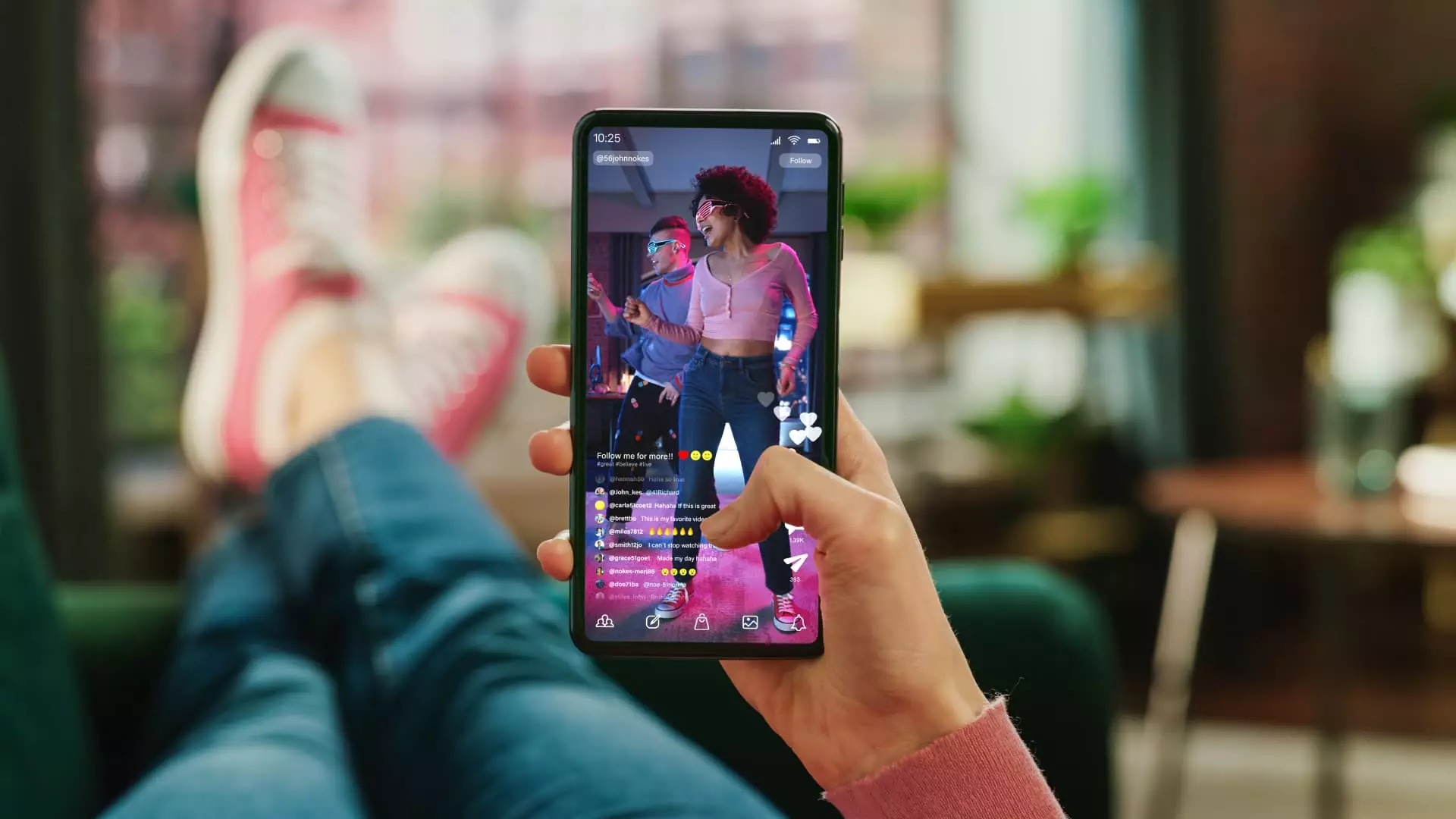In the rapidly evolving realm of social media, TikTok stands as an impressive titan, boasting over 1.12 billion monthly active users globally. This staggering figure, as reported by Backlinko, highlights not just user engagement but, perhaps more importantly, the type of engagement that keeps users glued to their screens for an alarming average of 108 minutes each day. As competitors scramble to regain ground in the short-form video market, a troubling reality emerges: TikTok is more than just a platform; it’s becoming the epicenter of an entire culture, especially for younger demographics. The app’s algorithm serves not only as a recommendation engine but as a cultural compass, dictating what is trending, shaping consumption patterns, and ultimately redefining how people interact with media.
In this unassailable position, TikTok acts as a double-edged sword. Its influence on young minds cannot be overstated. Jasmine Enberg, an analyst at Emarketer, makes a poignant observation, defining TikTok as the “center of the internet for young people.” This assertion presents an uncomfortable truth; while TikTok spotlights creativity and talent, it also filters what the youth consume down to bite-sized, algorithmic snippets. This phenomenon leads to a homogenization of content that stifles originality while pushing less favorable mental health outcomes.
Dark Underbelly: The Cost of Continuous Engagement
It’s essential to dissect what lies beneath this seemingly innocuous entertainment. The phenomenon known as “doom scrolling” describes a compulsive behavior among users, a term coined to reflect the darker emotional implications of excessive content consumption. TikTok creator Alyssa McKay’s admission about her scrolling habits reveals the underlying issue of addictive patterns in media consumption. With platforms designed to keep users engaged for extended periods, doubts arise regarding their long-term effects on mental health.
Yale’s Dr. Yann Poncin compellingly points out that short-form videos are engineered to capture attention in the briefest of moments, sacrificing the depth of storytelling for instantaneous gratification. While traditional media engaged audiences by leading them on a narrative journey, TikTok’s model is predicated on a series of quick, captivating bursts that reinforce a fleeting attention span. Researchers are linking these rampant scrolling habits to disrupted sleep patterns, heightened anxiety levels, and even lethargy. It raises the question—what does this mean for a generation that finds solace in temporary distractions but struggles with deeper issues?
Monetization Challenges: The Struggle for Sustainable Success
Even as TikTok attains epic proportions of user engagement, monetization of content remains an uphill battle. The platform generated nearly $23.6 billion in ad revenue last year alone, according to Oberlo, but these accolades do not translate to financial rewards for many creators. The harsh reality is that turning virality into a viable business model is more complicated than ever. While TikTok shines as a creative outlet, it often falls short as a lucrative career path for its users.
As revenue models evolve, platforms like YouTube and Instagram are also in a race to establish sustainable monetization for their short-video features—YouTube Shorts, for instance, pays a meager four cents per 1,000 views. This meager compensation raises stark questions about the long-term viability of content creation as a profession. Creators find themselves caught in a painful paradox; they can amass followers but may not secure income that corresponds to their influence.
To add fuel to the fire, Instagram’s “Trial Reels” provide a palliative measure for creators looking to innovate while under pressure. However, Meta admits that monetizing Reels is still a “work in progress.” This acknowledgment of uncertainty underlines the fragility of platforms in the transitory digital landscape.
The Political and Cultural Dilemma: Are We Too Complacent?
While TikTok continues to expand its dominion, scrutiny over its Chinese ownership looms large. Lawmakers are actively exploring bans and regulatory actions that would restrict the app’s operations in the U.S., presenting competitors—a mix of giants like Meta and YouTube—with a potential windfall: estimates suggest they could capture up to 50% of easily reallocated ad dollars if TikTok is curbed. But this raises an ethical question—will we allow political pressure to dictate cultural consumption?
It is critical for consumers and creators alike to scrutinize the platforms that serve as their primary connectors to the world. The Scandinavian model of tech regulation, which emphasizes user rights and mental health, may offer a more balanced solution than the all-or-nothing stance often adopted in U.S. policies. At the end of the day, as we ride this rollercoaster of digital delights, one must ponder—are we truly benefitting from this relentless competition, or are we simply pawns in an elaborate game of user retention and profit maximization?

